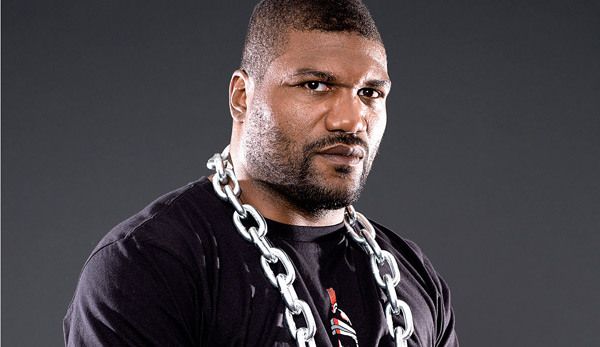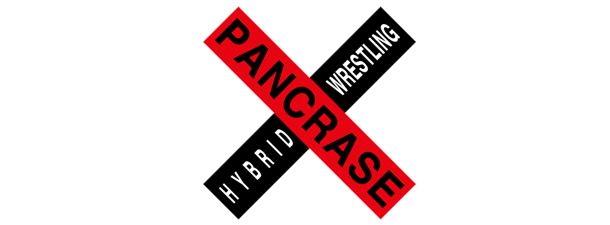wrestling / Columns
The Brain Buster 6.22.13: The MMA – Professional Wrestling Crossover (Part 1)

As Quinton “Rampage” Jackson made his debut for TNA, the Internet was filled with the murmurs of negativity. MMA pundits questioned his move to the VIACOM owned Bellator, as well as his ability to keep focus splitting time between both companies. Professional wrestling experts had the same concerns of focus for Rampage, citing their disbelief in Rampage’s ability to succeed in both MMA and professional wrestling. Similar questions were brought up by both mediums when Rampage’s friend “King Mo” Muhammed Lawal debuted for the very same TNA. An interesting point I saw from pundits and fans alike was their constant reference to past performer’s failure to succeed in both MMA and wrestling. They cited the likes of MMA champions like Don Frye and Dan Severn, as well as former UFC stars like Tank Abbot, pointing out their deficiencies in the ability to tell stories with their matches. On the opposite spectrum, as successful as Brock Lesnar was, there was fellow former professional wrestler Bobby Lashely, who sported an impressive physique, but has yet to master the art of striking, submissions, and cardio.
Many American fans of both wrestling and MMA do not agree on much; however, they both agree that the athletes should never try to transcend their respective sport or sport entertainment. They cite the litany of failed athletes who have tried and failed. I tend to group this with an American perspective. In the American perspective of both of these mediums, there is segregation between, not only the athletes, but the fans. People like Vince McMahon and Eric Bischoff have both stated that there is no correlation between professional wrestling and MMA. If we followed the trend of American athletes, I would have no choice but to agree. Although the sports remain, for the most part, separate stateside; in the country of Japan, there is a long history of crossover.
It is argued that Japan actually hosted the first MMA fight. A scheduled fight between one Muhammad Ali and Antonio Inoki. Inoki is a trailblazer in the professional wrestling scene, but in Japan, he is seen as a leader in the MMA community as well. Throughout the Japanese MMA programs Pride and Dream’s New Year’ Eve shows, he would command a strong presence in the broadcast. Although his fight with Ali received mostly negative reviews, it holds a strong precedence in the foundation of MMA.

Inoki was not the only professional wrestler to make large strides in the MMA world. In Japan, it is commonplace. The first MMA promotion to take place in Japan was created by two professional wrestlers. Masakatsu Funaki and Minoru Suzuki were both frustrated professional wrestlers who looked to start their own promotion. They created Pancrase, a company that focused on shoot fighting rather than having anything worked. Pancrase’s inception preceded that of UFC and helped stars such as Ken Shamrock, Frank Shamrock, and Bas Rutten get their start.
Pancrase sported a unique brand. It followed the rules of professional wrestling – no closed fist punches, no knees to the head, if you have a submission and your opponent grabs the rope, the hold must be broken – but the fights were obviously real. Pancrase was started to show the effectiveness of professional wrestling. The art of “catch wrestling” dominated the action, and gave the experience to fighters such as Ken Shamrock to dominate the field in the first UFC, before losing to Royce Gracie. Even natural strikers such as Bas Rutten were able to learn the intricate locks and chokes used in the catch wrestling style to complete his arsenal.

Although no scripted, once can watch several matches in Pancrase and see the story element present in professional wrestling. For example, take the now infamous match between Bas Rutten and Jason DeLucia. This fight is well known because Bas Rutten ended the fight by breaking DeLucia’s liver. But what led up to this fight? Rutten, a crowd favorite, was of course the face. He’s looking to prove he’s the best, and will match up against anyone to complete his mission. DeLucia, using several nefarious strategies during the fight, was the heel. He fainted receiving groin shots to Rutten, he claimed Rutten was using closed fists, and constantly pointed out Rutten’s rule breaking to the referee. The only problem was Rutten was not breaking any rules. DeLucia was just trying to frustrate Bas, and perhaps take an easy way out. You can hear in the recording, after DeLucia claimed Rutten attacked him low, Bas’ voice bellowing throughout the ring, “Tell the truth, Jason.” As this continued, Rutten becomes visibly more frustrated with his opponent and begins to target his liver – a trademark of the Dutch kickboxer. After he drops Jason several times with the liver, Bas tries to allow him to leave unscathed; however, after DeLucia claimed once more that Rutten was breaking the rules, Bas finished the fight with the most devastating shot that broke. It’s a story that builds the face, and makes the heel look slimey. It’s a great story.
Ken Shamrock was not the lone successful professional wrestler to come out of the promotion. He is the most successful American professional wrestler, by far; however, stars such as Funaki, Suzuki, Minowaman, and most recently Josh Barnett. These stars may be unfamiliar to the exclusive WWE crowd; however, all of these wrestlers were extremely successful in the Japanese professional wrestling scene. They all began and rose to prominence as fighters in Pancrase, but also built their professional wrestling skills. Pancrase built so many MMA fighters, not even included on this list, and was built to truly showcase the skills of catch wrestling. Before Dana White took over UFC and Pride FC began, Pancrase provided the benchmark for MMA, and it was created by professional wrestlers. They transcended both sports and all became well rounded with their respective characters.
Although their may continue to be increased pessimism with the current crop of athletes such as Rampage, who are attempting to be both an MMA star and a sport entertainment superstar, once can look back in history and see that it is indeed possible to succeed in both. Next week, we will look at one Kazushi Sakuraba to conclude this look at the MMA and professional wrestling crossover.







